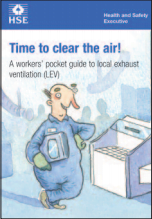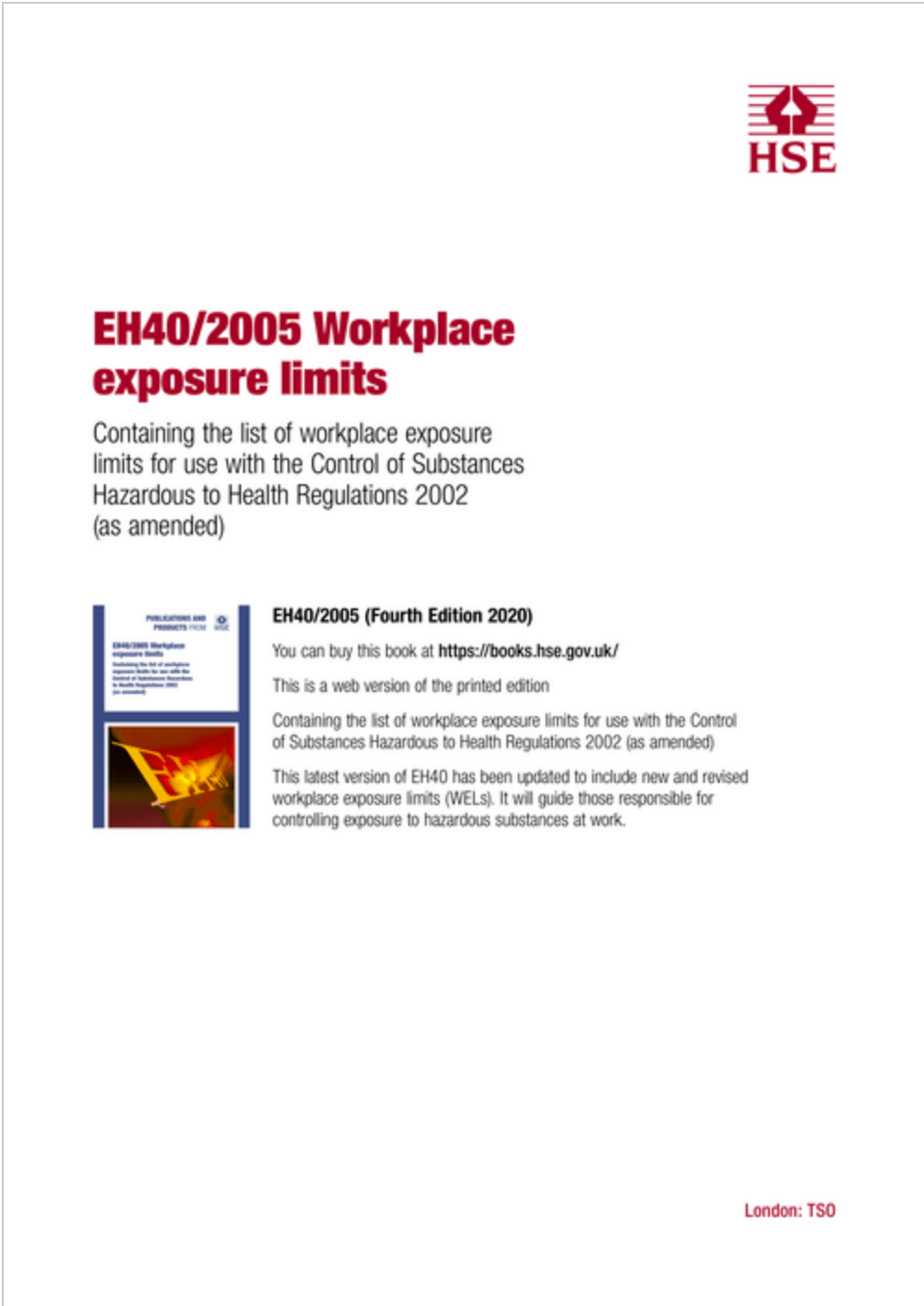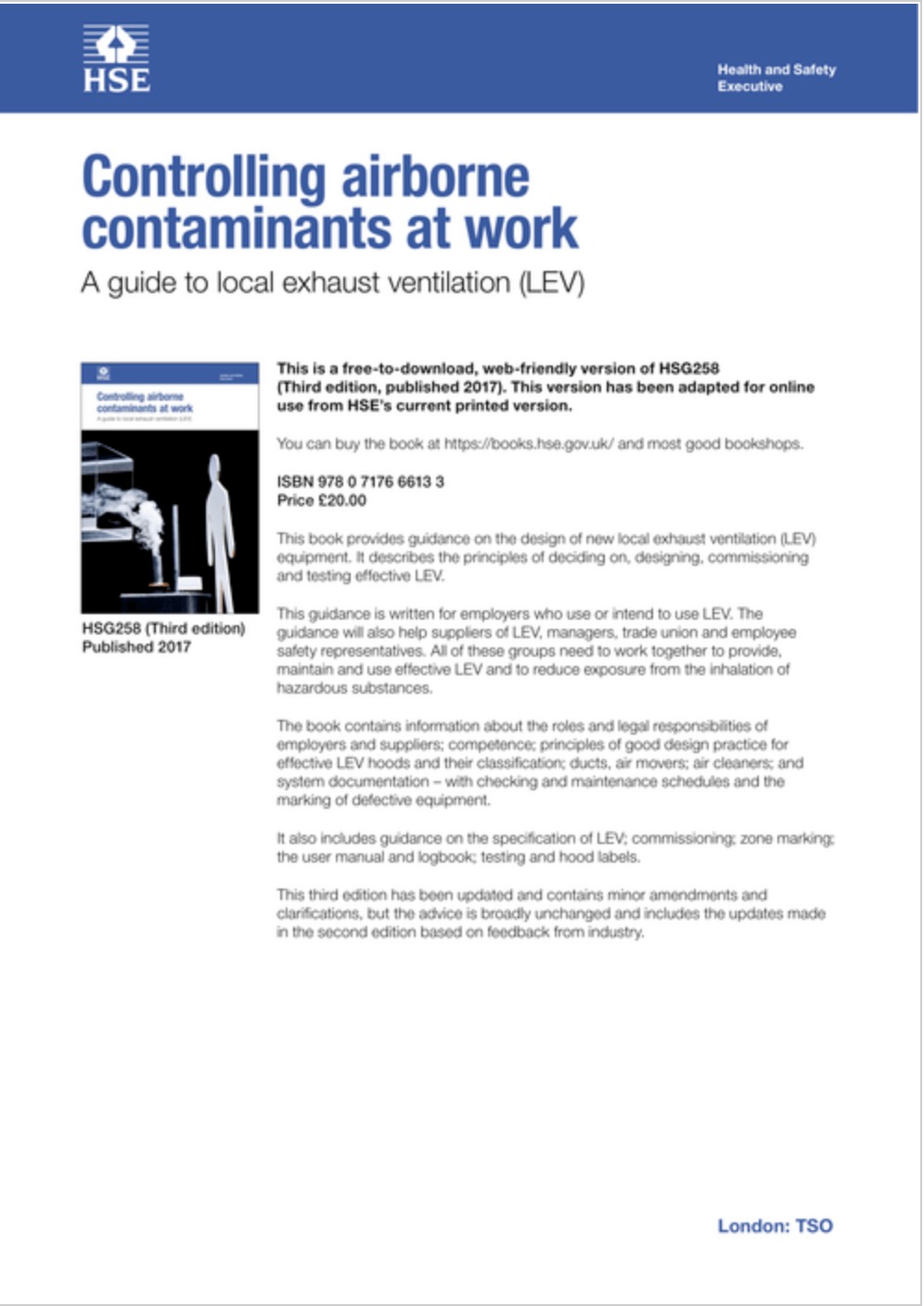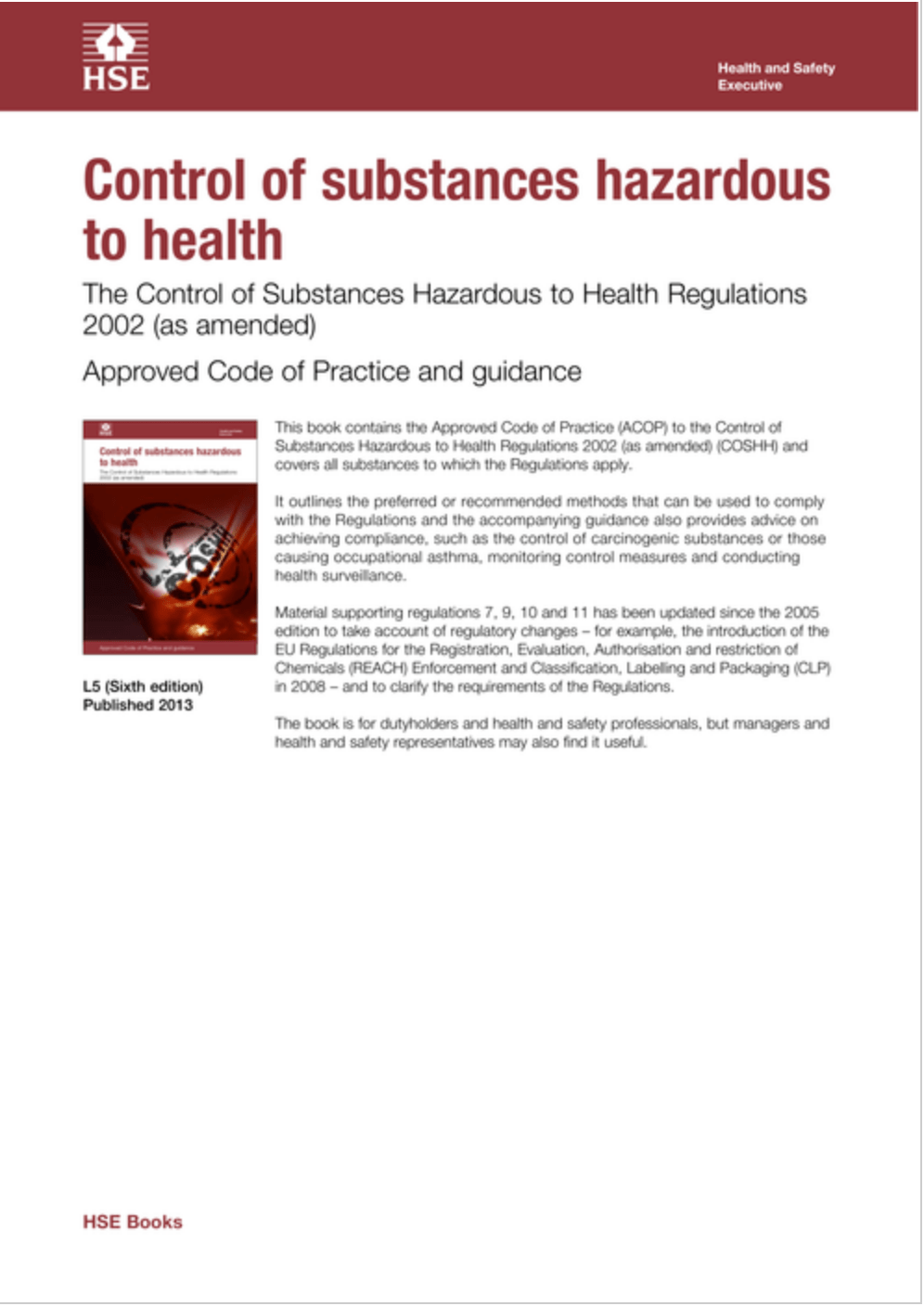LEV Testing in Oxford
Make sure your LEV systems are COSHH compliant – request a free quote today.
LEV Services
- LEV solutions for your dust, fume, and oil mist extraction requirements
- Comprehensive LEV support covering design, supply, installation, testing, and servicing of LEV systems
- LEV services conducted by BOHS qualified engineers
- Receive a detailed post-inspection report following LEV Testing
- Compliant with HSE HSG258 guidance and COSHH Regulations 2002 (as amended)
LEV Electrical Interfacing - Return on Investment
Production environments, no matter how efficient, will always have an element of downtime where components are moved and machine tools are reset.
Ordinarily, during this downtime the LEV extraction systems are still running, causing unnecessary noise pollution and energy consumption.
By fitting interfacing kits to your extraction units, the extraction will only run when the machine is in operation. The adjustable run off timer ensures the units continue to extract until the cabinet is clear before shutting the unit off.
The reduction in noise pollution creates a quieter, safer work environment that can boost efficiency.
For a production environment operating for 8 hours a day, roughly 50% of that time is downtime where components are removed and machine tools are reset.
Organisations can expect to see a significant reduction in energy consumption, and a typical ROI within 3-24 months.
Why choose McCarthy Environmental for your LEV Testing
Finding the right solution for you, not us
As an independent clean air solutions provider, we remain impartial and recommend the right solution for your extraction needs, through our range of manufacturer partnerships.
Support when you need it
Our unrivalled expertise in the field of LEV coupled with our partnering approach to doing business means you are assured the very best customer service, expert advice, attention to detail and the peace of mind that comes with knowing you are operating a safe and compliant workspace.
Helping you to stay compliant
Many believe that all LEV testing should occur every 14 months, however processes like metal grinding require more frequent testing. We stay up to date on legislation and guidelines to ensure that all our engineers maintain the appropriate qualifications, so that we can offer you the correct advice.
A reliable and worthwhile investment
We only ever use the highest-quality equipment and offer a range of maintenance and test package options. This offers peace of mind and complete support throughout the lifetime of the system.
The only provider you need
With over 50 years of combined experience, we offer all-in-one airborne extraction solutions. From LEV testing, repairs, maintenance, air monitoring, and servicing. We can also design, supply, install and commission a wide range of extraction systems nationwide.
Qualified & competent examiners
Our LEV examiners each hold a minimum of BOHS P601 proficiency certificate in Initial Appraisal and Thorough Examination and Testing of Local Exhaust Ventilation Systems.
Trusted & accredited
Accredited by The Contractor’s Health & Safety Assessment Scheme (CHAS) and Safe Contractor Approved. We are also a member of the Building & Engineering Services Association (BESA).
The Importance of LEV Testing
- Employee well-being
- Equipment longevity
- Compliance assurance
- Productivity & efficiency
What's involved in an LEV test?
- Thorough visual and structural examination, measuring the control effectiveness of your LEV systems.
- Measurement of technical performance.
- Assessment of control effectiveness.
- The issuance of comprehensive reports and compliance labels.
What's included in a COSHH report?
A test report is compiled for each LEV system. This will include:
- The engineer’s findings;
- Air flow measurements;
- The condition of the examined components;
- Any recommendations by the engineer;
- Filter condition;
- Filter replacement record.
Upon completion, a Certificate of Compliance is issued. This states that the equipment is suitable and fit for the purpose of effectively controlling the hazardous material. This report serves as a record of legal compliance in line with COSHH Regulations 2002 and HSG258 guidance.
What happens if a system fails an LEV test?
Our engineers will highlight any defects or poor system performance and advise on any remedial works.
We will provide a quotation for any necessary remedial work and re-test for compliance upon commissioning.
Should your LEV system be beyond economical repair, we will recommend a suitable replacement system fit for purpose.
What's the difference between LEV testing and LEV servicing?
Servicing is a separate process that provides ongoing peace of mind for your LEV equipment and more.
By undertaking routine maintenance when it is due, you reduce the risk of unforeseen costs associated with wear and tear. Regular servicing can prolong the life of parts and equipment, meaning a better value for money and return on your investment.
As an employer, it is your legal obligation to ensure that any LEV system is maintained in an efficient state, in effective working order, in good repair, and in a clean condition.
LEV testing must be performed at least once every 14 months according to COSHH Regulations 2002. Some processes, such as metal grinding, require more frequent testing. The examination and test must be carried out by a suitably qualified and competent person, and records need to be kept for 5 years.
If your LEV systems have not been tested regularly, or the systems are failing, it poses a serious risk to the health of your employees. Insufficient extraction can have adverse and long-term impacts on your employees’ respiratory systems. Not only that, but failure to prove compliance can invalidate business insurance policies or result in your company receiving significant fines.
Our comprehensive service ensures you remain compliant with HSG258 Section 10 guidance in terms of frequency and timing of LEV testing. We recommend arranging an annual LEV test. If the system fails for any reason, there is still time to complete repairs, modifications, and retesting within the timeframe.
Request a LEV testing quote for your site in Oxford






